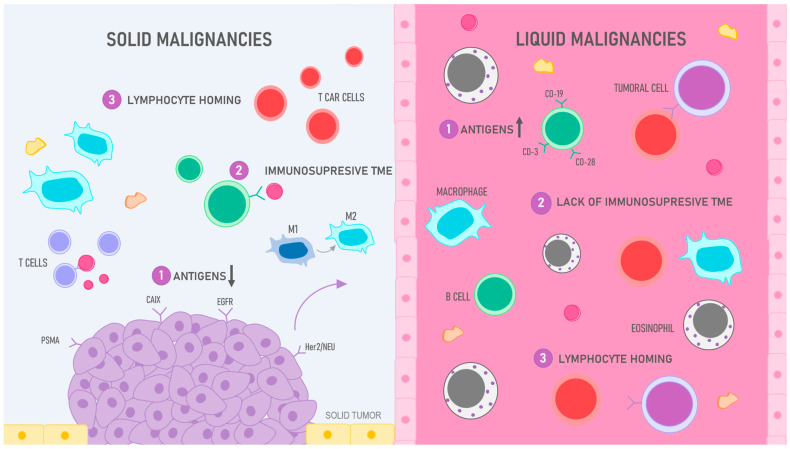Figure 4.
CAR T cell efficiency: liquid vs. solid malignancies: 1. Antigens: while the target antigens in liquid malignancies such as leukemia and lymphoma are efficient, solid tumors pose a challenge due to their scarce and heterogenous expression of antigens; various antigens like CAIX, EGFR, Her2/neu, and PMSA, among others, have been tested; however, the results have not been completely satisfactory, particularly in contrast with CD-19 antigen, used to treat B cell malignancies, the arrows pointing down in solid tumors represent the scarcity of antigens in these malignancies and, in contrast, the arrow pointing up in liquid neoplasia reflects the availability of these surface molecules in these cancers. 2. Immunosuppressive TME: the hostile tumoral microenvironment (TME) in solid tumors has hampered the development of successful CAR T cell therapy since this environment not only promotes tumoral development but also has the ability to deactivate immune cells, therefore obstructing the labor of CAR T cells; in contrast, liquid neoplasia does not present these issues as the cells are “fluid” and circulate within blood or lymphatic vessels. 3. Lymphocyte homing: finding the target antigen in leukemias and lymphomas is not a particularly challenging task for T cells since these cells can be found circulating in the bloodstream; however, in solid tumors, CAR T cells must be trafficked to specific sites, penetrate into the tumoral stroma, and evade multiple suppressing molecules to reach their target.

